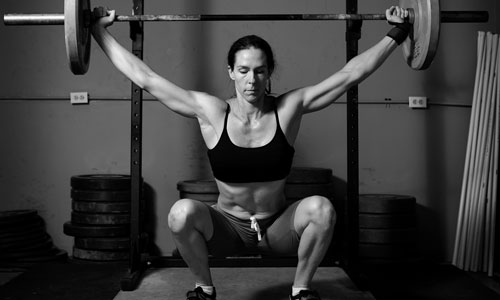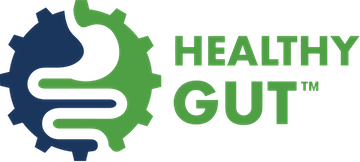Strength Training for the Specific Carbohydrate Diet

Can boiling water get more boiled? In other words, if I crank the heat up higher and higher after my water is boiling am I achieving anything?
The answer is NO if my desired outcome was boiled water. After heating water to 212°F (100°C), at standard air pressure, any extra effort is wasted. Boiled water is boiled.
This is a great example from Tim Ferriss of MED (minimum effective dose). MED is simply the smallest dose that produces the desired outcome.
Any effort of any kind beyond the MED is wasted.
What does that mean for our daily lives?
- It means the goal or desired outcome is more important than ever
- And that more is not always better, which applies in all areas of our lives
Strength Training Will Improve Your Life If Done Right
In the first post on this topic, we found that strength training coupled with the specific carbohydrate diet can help us heal, keep us from developing age related diseases like osteoporosis and allow us to look good. But it has a dark side; done wrong it wastes precious time and energy that we could be using to heal our gut. Taken to an extreme, such as 1.5hr weight lifting sessions with cardio, it will even set us back and keep us from healing.
Anja Hartleb-Parson, a personal trainer and life coach who has struggled with digestive problems, is back to help us wrap up the subject of strength training.
Enter Anja:
Based on my previous post, in which I discussed the general principles of effective exercise and what they mean for healing and recovery, I want to now give you some specific tips on how to develop and implement an exercise routine that is right for you in the context of digestive healing.
A Few Caveats Upfront Though:
1) Having looked at the research, I consider weight training the best bang for your exercise buck. Cardio activities are ok if you enjoy them or if you are trying to achieve certain goals (e.g. a 7-minute mile). But beware that excessive cardio is not the way to go if your primary goal is to heal, gain weight, build muscle or lose fat because it strains your body’s recovery resources and may even create further inflammation.
2) I am assuming that you have been cleared for lifting weights by a doctor, and that you feel well enough to engage in it. But be careful, take it slow and really pay attention to the signals your body is giving you.
3) It is absolutely vital that you know how to lift weights correctly, not only to prevent injury but also to ensure that you are working the right muscles.
4) I highly recommend you workout with a partner. A partner can check your form, lifting speed and intensity, help you reach muscle failure more effectively (see below), and motivate you.
Now that we have that out of the way, the key to finding the right routine is understanding that exercise is just like taking medicine; you need to find the right amount that is most effective but produces the least side effects. More is not better; be prepared to dial it back and do less when necessary.
Steve: Again defining MED, very important concept.
That is why I do not recommend doing more than one set per exercise. Despite what I was taught as a personal trainer, the research has not convinced me that multiple sets are necessary. Moreover, doing more than necessary is counter-productive to your goals because it overtaxes your body’s recovery resources.
That said, the determinants for setting up your exercise routine should be your goals, exercise intensity, recovery and measurement.
Know Your Goals
If you still have healing to do but feel well enough to start lifting, or if you have trouble gaining weight, you probably should begin with an abbreviated routine to avoid impeding your body’s recovery ability. I recommend no more than 3 compound movements, 1 set each, every 5 to 7 days.
If you are strong enough to focus on muscle gain and fat loss, you can try a routine that addresses all major muscle groups with 4 to 6 mostly compound movements, 1 set each, every 3 to 5 days.
Ensure Proper Intensity
As explained previously, reaching complete muscle failure is crucial. That entails choosing a heavy enough weight, moving the weight through a full range of motion, using the right number of repetitions, and a slow cadence (i.e. speed at which you move a weight) to avoid having momentum do the work for you.
Most people are not used to actually reaching muscle failure (even if they think they do) because they stop before things get too uncomfortable, and they don’t focus enough on their workout. (Chatty Kathy, anyone?) If you don’t get to failure during your first couple of workouts, that’s ok. But keep moving toward it.
One very effective trick I found to ensure proper form, speed and intensity is to visualize and feel the muscle I am working while I move the weight. It also helps me determine whether I have really reached muscle failure or still have some gas left in the tank to use up.
Now, without going into the technical detail here, there are three levels of strength you need to exhaust to achieve muscle failure: positive (lifting), static (holding), and negative (lowering).
Your positive strength is considerably weaker than your static and negative strengths. The best rep range I have found is 8 to 12, so choose a weight that will allow you to lift slowly, controlled and with good form for at least 8 repetitions but no more than 12. Your lifting speed should be at least 2 seconds.
Once you fail on the positive, you still need to exhaust your negative and static levels. To do that, have your partner help you lift the weight and then let you lower it in good form for at least 4 seconds.
Once you cannot lower the weight anymore without good form, simply keep pushing against it for as long as you can to exhaust your static strength.
Take Enough Time to Recover
If you have employed the right intensity, you will require a good chunk of time to recover. This varies from person to person. In the beginning, when your body is not used to doing this kind of exercise, you may need extra time.
Generally I have found 4 to 7 days in between workouts to be sufficient, but there is no shame in taking an extra day off. It is more important to pay attention to your body’s signals, i.e. how well you feel, whether you have any soreness left, and whether you are psychologically motivated enough to work as hard as you should.
Steve: Listen to your body. If you’re really sick start with daily walks and some yoga as Matt suggested. But don’t confuse this with not working out because you “don’t feel like it” or some other excuse is not “listening to your body.” It’s just making excuses.
Also, as you advance, your recovery time will increase because you need to work at greater intensity levels to keep triggering an adaptation response from your body.
Measure Your Results
To know you are on the right track, keep a workout log. It should include the exercises you performed, the weight you used, and how many reps at each level of strength you performed (i.e. note down how many positive, negative and partial reps you completed, and how long you were able to push against the weight at the end). A spreadsheet works great for this.
Steve: Very important to do this. Just like a food journal – if you’re not recording and tracking why are you doing it? I use a small, spiral-bound book and a pen that I keep in my gym bag, it never leaves my bag so I never have an excuse to forget it. Also, make sure you record things like the position of the seat or pin location on the equipment you use. We want to keep those variables the same every time you lift if possible.
You might also want to make note of certain things you noticed, e.g. “I was kind of tired today, ” “I didn’t go to complete failure on the chest fly, ” etc.
Keeping a record will allow you to adapt your intensity as you progress. Once you reach the upper limit of the rep range on an exercise, you should increase the weight by at least 5 percent the next time you perform that exercise.
Your workout log can also tell you what changes to make to the routine when you are stuck. If for instance you notice you are not moving up in reps or weight on the shoulder press, your shoulders might be lagging behind in strength gains. In that case, you might want to try working your shoulders first when you are still fresh, or employ some advanced protocols (see below).
Steve: I like to use a tape measure to track my gains body-wise. Scale weight is nothing but a measure of gravity on the body. I don’t use it and encourage most to throw theirs away. Track your waist size with a tape measure instead of a scale.
Two Sample Routines
I personally use the routines below: the first one when I don’t feel strong enough for a full routine, and the second one when I am 100 percent. For both, do one set of each exercise, 8-12 reps, using 2 seconds to lift and 4 seconds to lower. I use machines instead of free weights because they are safer and more effective.
1. Routine
- Leg Press
- Chest Fly
- Row OR Pull-down
2. Routine
- Shoulder Press
- Row OR Pull-down
- Chest Fly
- Leg Press
- Hamstring Curl OR Leg Extension
- Bicep curl OR Triceps Extension
You can customize these routines depending on your needs and progress. For instance, you can modify the order of the exercises, or employ advanced protocols such as negative-only reps, static hold-only and strongest-range reps (this is when you do reps in your strongest range of motion only).
Steve: These advanced ideas are not needed by most people. Don’t concern yourself with them. Remember, more does not always mean better. When you can bench, squat and deadlift 1.5-2 times your body weight, then you can start worrying about these ideas.
Advanced protocols though do require more resources to recover, so select only one or two exercises for which to use them, make note of them in your workout log and pay special attention during your recovery period to how you respond to them.
Well, I hope this post was helpful to you. Let me know what you think; I look forward to your feedback.
– Steve
Anja Hartleb-Parson is Vice President of Research for an educational non-profit. As the owner of Lead Your Self Coaching, she also helps people fine-tune their thinking skills for maximum achievement.
Did You Like this Article?
Subscribe to our newsletter to receive email notifications, some ways to find relief, and next steps.
